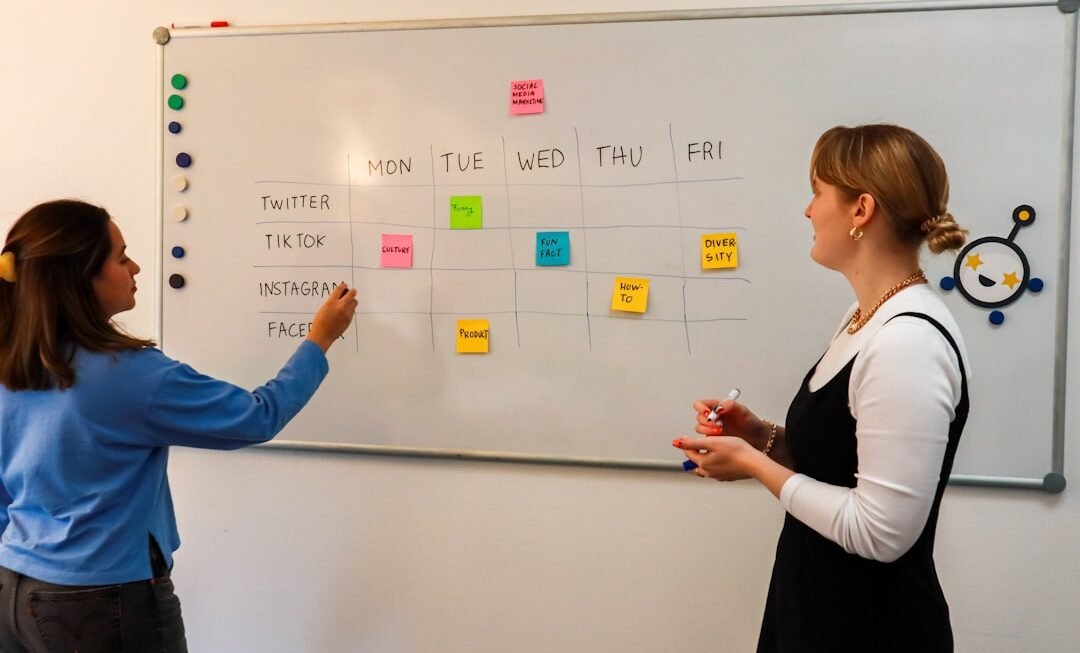In the realm of online education, the significance of cultivating a sense of community cannot be overstated. Unlike traditional classroom settings, where physical presence fosters immediate social interactions, online learning environments often lack the spontaneous connections that can enhance the educational experience. A strong community can bridge this gap, providing students with a sense of belonging and support that is crucial for their academic success.
When learners feel connected to their peers and instructors, they are more likely to engage actively with the course material, participate in discussions, and seek help when needed. This interconnectedness not only enriches the learning experience but also contributes to higher retention rates and improved academic performance. Moreover, building a community in online learning environments encourages collaboration and knowledge sharing among students.
When learners come together, they bring diverse perspectives and experiences that can enhance discussions and deepen understanding of complex topics.
Strategies for Fostering Collaboration Beyond the Screen
To effectively foster collaboration in online learning, educators must implement strategies that encourage interaction beyond the confines of digital platforms. One effective approach is to create small study groups or learning pods where students can connect regularly through video calls or messaging apps. These groups can serve as safe spaces for students to discuss course materials, share insights, and collaborate on assignments.
By establishing these smaller communities within the larger online course, educators can help students form meaningful relationships that extend beyond the screen. Another strategy involves incorporating asynchronous discussion forums that prompt students to engage with one another’s ideas. By posing open-ended questions related to course content, instructors can encourage students to respond thoughtfully and build on each other’s contributions.
This not only promotes deeper engagement with the material but also allows students to develop their communication skills in a written format. Additionally, integrating peer review processes into assignments can further enhance collaboration, as students provide constructive feedback to one another, fostering a sense of accountability and shared responsibility for learning outcomes.
Utilizing Technology to Enhance Community Building
Technology plays a pivotal role in enhancing community building in online learning environments. Various tools and platforms can facilitate communication and collaboration among students, making it easier for them to connect and engage with one another. For instance, utilizing social media groups or dedicated online forums can create informal spaces for students to share resources, discuss ideas, and build relationships outside of formal coursework.
These platforms allow for real-time interaction and can help break down barriers that may exist in more traditional online settings. Additionally, leveraging collaborative tools such as Google Docs or project management software can streamline group work and enhance teamwork among students. These tools enable real-time collaboration on projects, allowing students to contribute simultaneously regardless of their geographical locations.
By using technology to facilitate collaboration, educators can create an interactive learning environment that mirrors the dynamics of face-to-face interactions, ultimately fostering a stronger sense of community among learners.
The Role of Instructors in Facilitating Online Collaboration
Instructors play a crucial role in facilitating online collaboration and community building within their courses. Their presence and engagement can significantly influence the level of interaction among students. To foster a collaborative environment, instructors should actively participate in discussions, provide timely feedback, and encourage students to share their thoughts and experiences.
By modeling collaborative behaviors themselves, instructors set the tone for the course and demonstrate the value of community engagement. Furthermore, instructors can design activities that promote collaboration and interaction among students. For example, they might implement icebreaker activities at the beginning of the course to help students get to know one another better.
These activities can range from simple introductions to more interactive games that encourage sharing personal interests or experiences related to the course content. By creating opportunities for students to connect early on, instructors lay the groundwork for a supportive community that thrives throughout the duration of the course.
Creating a Supportive and Inclusive Online Learning Environment
A supportive and inclusive online learning environment is essential for fostering community among diverse student populations. Educators must be intentional about creating spaces where all voices are heard and valued. This involves recognizing and addressing potential barriers that may hinder participation from certain groups of students.
For instance, instructors should be mindful of cultural differences and varying levels of comfort with technology when designing course activities. To promote inclusivity, educators can implement strategies such as providing multiple avenues for participation—such as discussion boards, video responses, or live chats—allowing students to choose the format that best suits their comfort level. Additionally, establishing clear guidelines for respectful communication can help create a safe space for dialogue where students feel empowered to share their perspectives without fear of judgment.
By prioritizing inclusivity, educators not only enhance community building but also enrich the overall learning experience by incorporating diverse viewpoints.
Encouraging Active Participation and Engagement
Active participation is a cornerstone of effective online learning communities. To encourage this engagement, educators must create an environment where students feel motivated to contribute their ideas and insights. One effective method is to incorporate gamification elements into the course structure.
By introducing leaderboards, badges, or rewards for participation, instructors can incentivize students to engage more actively with their peers and course content. Additionally, fostering a culture of recognition can further enhance participation levels. Instructors might highlight exemplary contributions during discussions or showcase student projects in a dedicated forum.
This not only validates individual efforts but also encourages others to participate more actively in hopes of receiving similar recognition. By cultivating an atmosphere where participation is celebrated and valued, educators can significantly enhance community engagement within their online courses.
Leveraging Group Projects and Teamwork in Online Learning
Group projects are an effective way to leverage teamwork in online learning environments while simultaneously building community among students. These collaborative assignments encourage learners to work together towards a common goal, fostering communication and cooperation skills essential for success in both academic and professional settings. When designing group projects, educators should consider incorporating diverse roles within teams to ensure that each student has an opportunity to contribute meaningfully based on their strengths.
Moreover, providing clear guidelines and expectations for group work is crucial for its success. Instructors should outline specific objectives, deadlines, and assessment criteria while also encouraging teams to establish their own norms for collaboration. This empowers students to take ownership of their learning experience while promoting accountability within the group dynamic.
By facilitating effective group projects, educators not only enhance community building but also equip students with valuable skills that extend beyond the classroom.
Building Trust and Rapport in Virtual Learning Spaces
Trust and rapport are foundational elements of any successful community, including those formed in virtual learning spaces. To cultivate these qualities among students, educators must prioritize relationship-building from the outset of the course. This can be achieved through regular check-ins or informal discussions that allow students to share their thoughts and feelings about the course material or their personal experiences.
Additionally, creating opportunities for peer mentorship can further strengthen trust within the community. Pairing experienced students with newcomers fosters connections that can enhance both academic performance and social integration. As students build relationships based on mutual support and understanding, they are more likely to engage openly with one another, contributing to a positive learning environment where everyone feels valued.
Overcoming Challenges and Barriers to Online Collaboration
Despite the many benefits of online collaboration, challenges and barriers often arise that can hinder community building efforts. One common obstacle is technological issues that may prevent students from accessing course materials or participating in discussions effectively. To mitigate this challenge, educators should provide comprehensive technical support resources and offer alternative methods for participation when necessary.
Another barrier is the potential for miscommunication in written interactions, which can lead to misunderstandings among students. To address this issue, instructors should emphasize the importance of clear communication practices within the online community. Encouraging students to ask clarifying questions or express concerns openly can help reduce ambiguity and foster a more collaborative atmosphere where everyone feels comfortable sharing their thoughts.
Promoting Diversity and Cultural Awareness in Online Communities
Promoting diversity and cultural awareness within online communities is essential for creating an inclusive learning environment that values all perspectives. Educators should actively seek to incorporate diverse voices into course materials by selecting readings or resources that reflect various cultural backgrounds and experiences. This not only enriches discussions but also helps students develop a broader understanding of global issues.
Furthermore, facilitating discussions around cultural awareness can enhance community building by encouraging students to share their unique perspectives and experiences related to diversity. Instructors might implement activities that prompt reflection on cultural identity or explore how different backgrounds influence viewpoints on specific topics. By fostering an environment where diversity is celebrated and explored, educators contribute to a richer learning experience that prepares students for success in an increasingly interconnected world.
The Impact of Strong Online Communities on Learning Outcomes
The presence of strong online communities has a profound impact on learning outcomes for students engaged in virtual education. Research has shown that learners who feel connected to their peers are more likely to achieve higher levels of academic success compared to those who feel isolated or disengaged from their courses. This correlation underscores the importance of prioritizing community building as an integral component of online education.
Moreover, strong online communities foster resilience among learners by providing support networks that encourage persistence in the face of challenges. When students encounter difficulties—whether academic or personal—they are more likely to seek help from their peers or instructors if they feel part of a supportive community. This sense of belonging not only enhances individual well-being but also contributes to overall course satisfaction and retention rates.
Ultimately, investing in community building within online learning environments yields significant benefits for both learners and educators alike.












